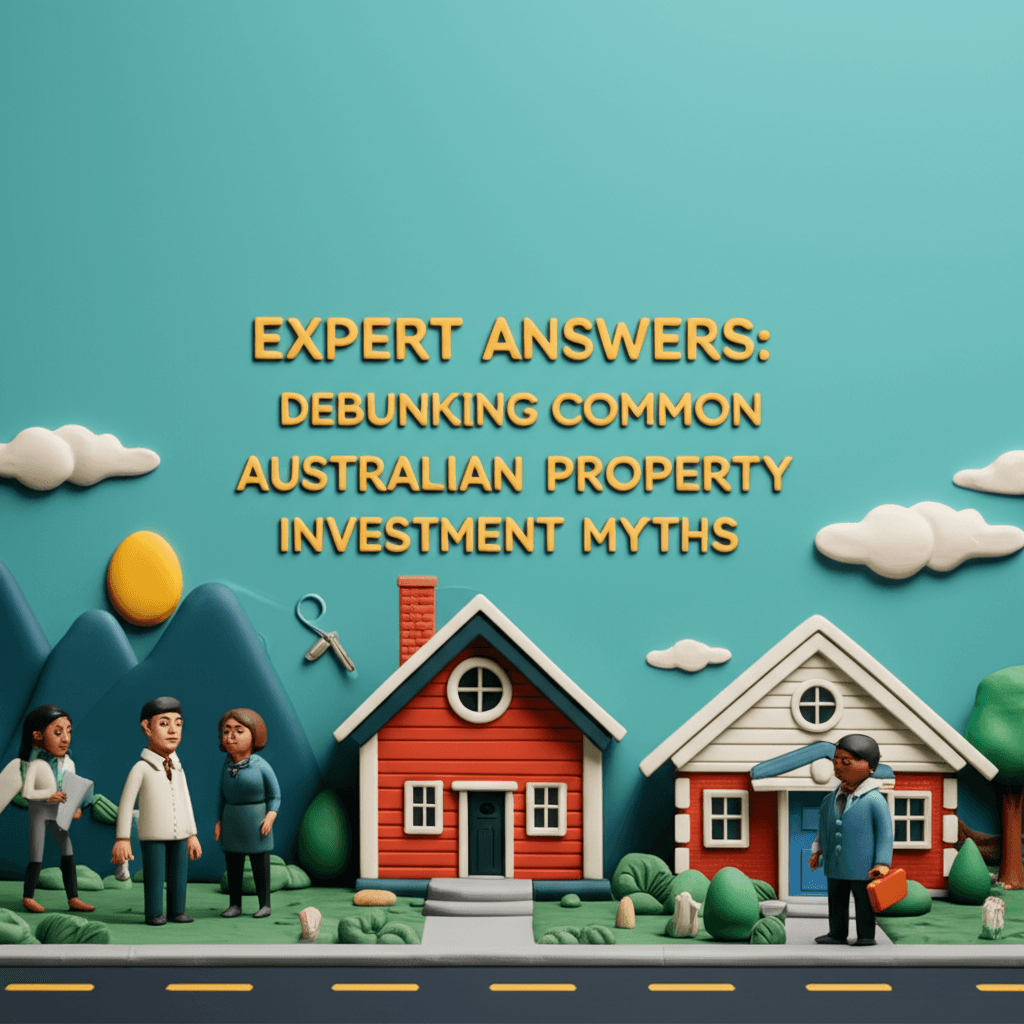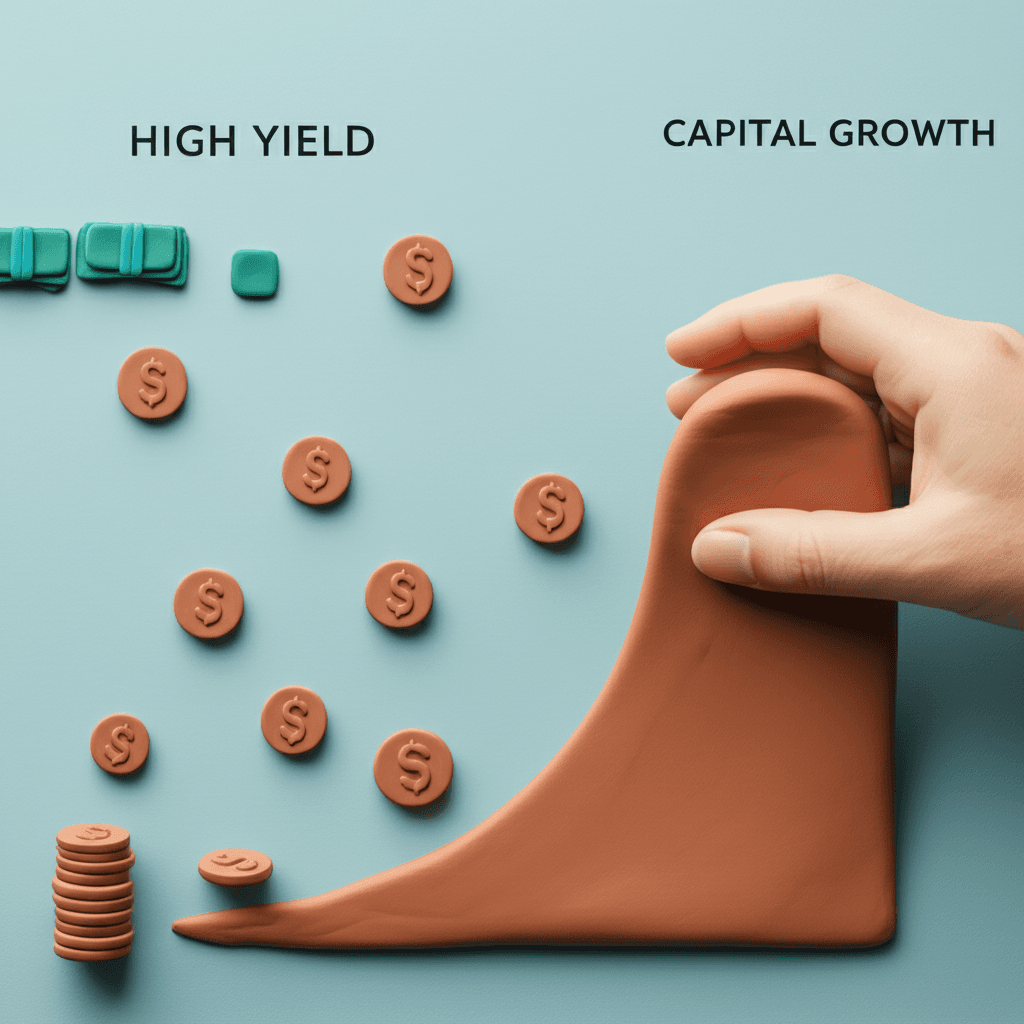Expert Answers: Debunking Common Australian Property Investment Myths
We tackle your toughest questions on capital growth vs. yield, depreciation, market timing, and making data-driven decisions for long-term success.

Introduction
Navigating the Australian property market can feel like walking through a maze of conflicting advice. From chasing high yields to the allure of brand-new properties, investors are often pulled in multiple directions. To cut through the noise, we've distilled insights from property experts to answer your most pressing questions. This guide debunks common myths and provides a clear, data-driven framework for making smarter investment choices.
The Depreciation Debate: Why 'New' Isn't Always Better
A common misconception among investors is that depreciation is a financial 'benefit'. While you can claim depreciation on a newer property as a tax deduction, it's crucial to remember what it represents: a loss. Depreciation is the decline in value of the building itself. A brand new house will have a high rate of depreciation in its early years, which means you're paying a premium for 'newness' that rapidly fades. The goal of investing is to maximise gains and minimise losses.
Experts suggest a strategy of letting the initial, steep depreciation 'wash out' before you buy. By targeting established properties (e.g., 30-60 years old), you acquire an asset where the building's value has stabilised. More importantly, these older properties often sit on larger blocks of land, giving you a superior land-to-asset ratio. Since it's the land that appreciates most significantly over time, focusing on older homes in areas with low supply and strong demand is a proven strategy for superior capital growth.

Capital Growth vs. High Yield: The Great Investor Divide
Another persistent debate is whether to prioritise high rental yield for cash flow or focus on capital growth for wealth creation. While positive cash flow is important for servicing loans, fixating on an extra 1% in yield can be a costly mistake. This narrow focus often restricts your search to a tiny fraction of the market, causing you to miss out on suburbs with far greater growth potential. A 10% capital gain on a $500,000 property adds $50,000 to your net worth—an amount that a slightly higher yield could take decades to accumulate.
The fastest path to a financially secure, cash-flow-positive portfolio is ironically through capital growth. As your property's value increases, you gain equity. This equity can be leveraged to acquire more assets, accelerating your portfolio's growth. Cash flow is taxed annually, whereas capital growth is only taxed upon sale, allowing your wealth to compound more effectively over time. To find markets with the right balance, investors should use sophisticated real estate analytics tools that weigh up all the critical supply and demand drivers.

Navigating Affordability: Units, Price Points, and Market Entry
Many aspiring investors believe they are priced out of the market. However, your budget shouldn't be a barrier, but rather a guide for your strategy. Price alone is not an indicator of future performance; both affordable and expensive markets can experience explosive growth. The key is to identify markets with strong underlying fundamentals, regardless of the price point.
For those with a limited budget, investing in an established apartment or unit can be a viable entry strategy. While houses typically outperform due to a higher land component, a well-chosen unit in a high-demand market can still deliver solid returns and serve as a hedge against inflation. The primary risk with units is oversupply, as new developments can easily saturate a local market. To mitigate this, focus on older, smaller complexes in established suburbs where there is limited scope for new construction. This approach can provide the foothold needed to build equity for your next purchase.
Your Investment Timeline: It's Never 'Too Late' to Start
Whether you're 29 or 40, the question of timing is always front of mind. The simple answer is that it's never too late to begin building a property portfolio. A single high-performing investment property, combined with your superannuation, can significantly improve your retirement outlook. The strategy is what matters most. For instance, an active investor might buy in a market poised for growth, hold for 3-4 years, and then sell to reinvest the profits into the next booming area. This trading strategy is made possible by modern AI-powered property search and analytics platforms that can forecast market cycles with greater accuracy.
This data-driven approach allows you to identify when a market is nearing its peak, liquidate the asset to realise your gains, and reallocate those funds to a market at the beginning of its growth phase. This proactive management ensures your capital is always working its hardest for you, regardless of when you start your investment journey.

Conclusion
Successful property investing hinges on moving past common myths and adopting a data-first mindset. Prioritise long-term capital growth over short-term cash flow, understand that the real value lies in the land, not the newness of the building, and use your budget to define your strategy, not limit your ambition. By leveraging powerful analytics, you can make informed decisions, identify high-potential markets, and confidently build a portfolio that stands the test of time.
Ready to move beyond guesswork? Explore HouseSeeker's real estate analytics tools to uncover high-growth suburbs and make investment decisions with confidence.
Frequently Asked Questions
Is buying a brand new property a bad investment?
Not necessarily, but it comes with challenges. Brand new properties experience their steepest depreciation in the first few years, meaning you pay a premium for something that is losing value. They also typically have a lower land-to-asset ratio. For most investors focused on long-term wealth, an established property in a location with strong growth fundamentals is a more reliable choice.
Should I prioritise high rental yield over potential capital growth?
While healthy cash flow is necessary, focusing solely on yield is a common mistake. The most significant wealth creation in property comes from capital growth—the increase in the asset's value. Sacrificing a potential 10% capital gain for an extra 1% in rental yield is rarely a winning financial trade-off. A balanced approach using data analytics to find markets with both solid yield and strong growth prospects is ideal.
Can I still build a strong portfolio if I can only afford a unit?
Absolutely. A limited budget shouldn't stop you from entering the market. A well-located, established unit in a small complex can be an excellent first step. It allows you to get into the market, hedge against inflation, and build equity. This equity can then be used as a deposit for your next purchase, whether it's another unit or a house, effectively kick-starting your portfolio growth.
